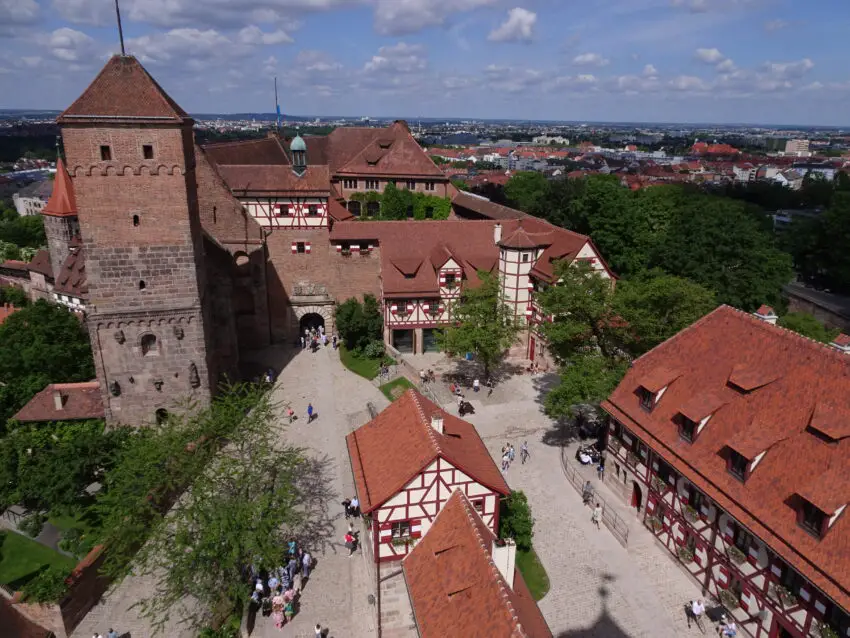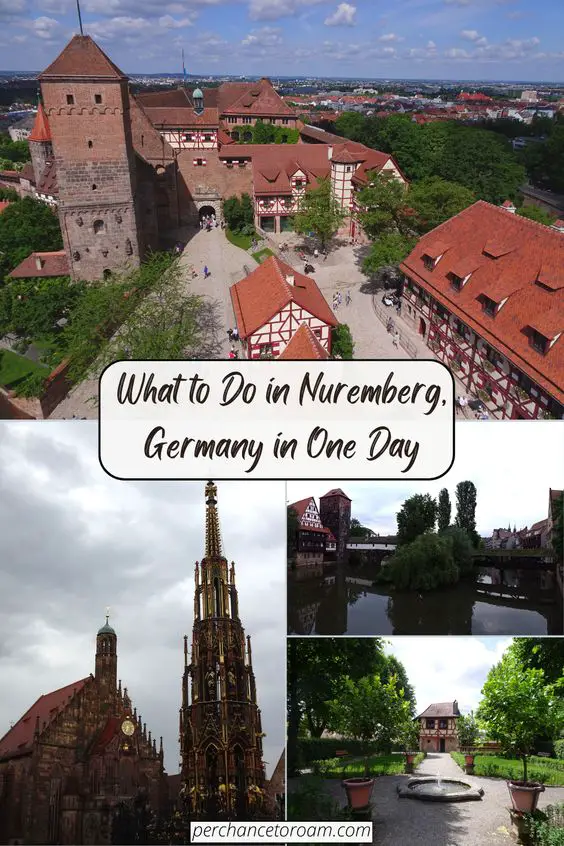Sitting in the attractive northern part of Bavaria, Nuremberg is one of my favourite cities in Germany. With a beautifully restored medieval city centre, some interesting museums and a wonderful castle, there is enough to see to keep you occupied for a couple of days.
If your time is limited, it’s still possible to squeeze the absolute highlights into a well-planned one-day itinerary. I recently revisited Nuremberg for a concert, so I can give you all the up-to-date information. Here’s my personal one-day itinerary for this historic gem.
This post may contain affiliate links, and I might earn a small commission at no additional cost to you. For more info, click here.
Guided Tours of Nuremberg
If your time in the city is limited, you might want to consider taking a guided tour of Nuremberg, so you don’t miss any of the highlights. There are both walking tours available, like this well-rated private tour, as well as private driving tours like this one, allowing you to visit some places outside the centre. Have a look at some options below.
The Perfect One-Day Itinerary for Nuremberg, Germany
Nuremberg’s centre is best traversed by foot, and I assume that most people will start their explorations from the city’s train station. If you’re traveling by car instead of by train, there’s a big parking garage right next to the station. The historical centre lies to the north of the station’s main entrance, just across the big road.

.
Top 3 Places to Stay in Nuremberg
Budget Option: Jugendherberge Nürnberg (pictured)
Midrange: Hotel Victoria
Luxury Choice: Hotel Karl August
.
Frauentor Gate and Handwerkerhof
This strategically placed area of shops and cafés may be a bit tacky, but you’ll have to cross it on your way from the train station to the city centre, so you might as well take your time and look around for a few minutes.
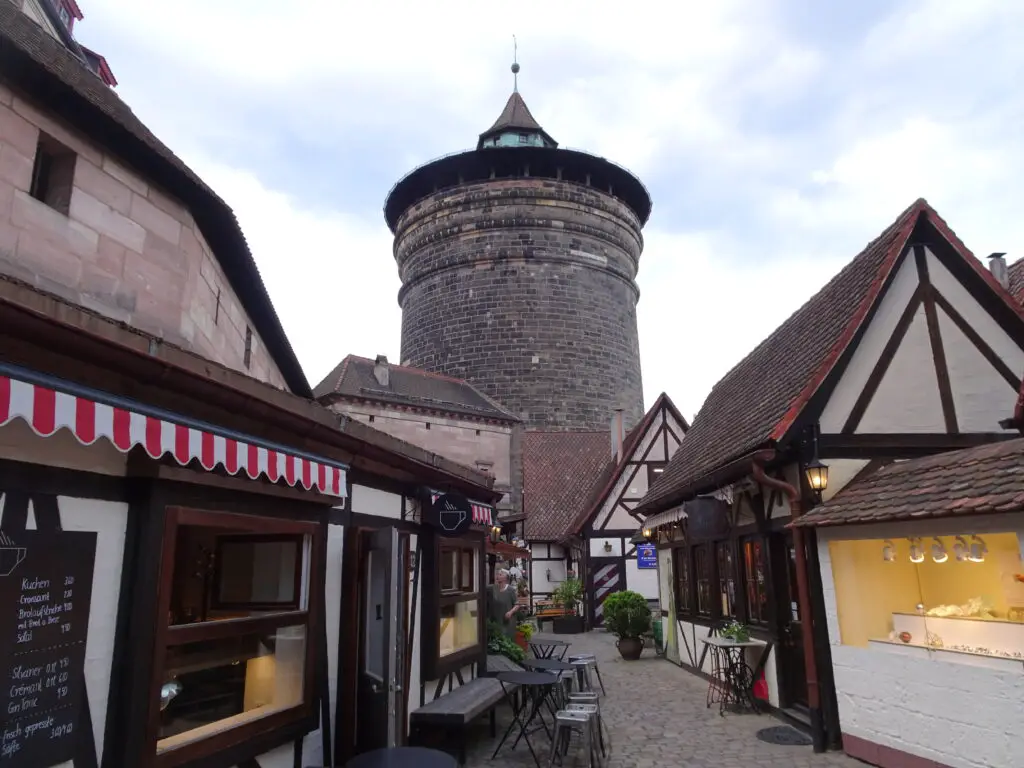
The Frauentor Gate and surrounding fortifications are actually medieval, but the little half-timbered houses were only constructed in the 1970s, so it all feels a little fake and disneyland-ish. Continue north and follow Königstraße to get into the actual historical centre of Nuremberg.
St. Lorenz Church
There are a lot of medieval churches in Nuremburg, but this one is my favourite. The huge Gothic building, dedicated to St. Lawrence, was constructed in the 13th to 15th centuries. As is usually the case with churches dating to that period, the exterior is very imposing as it towers over the small square in front.

The lofty interior is dominated by tall stone pillars and decorated by some nice stone and wood carvings. I especially liked the intricate Angelic Salutation (Ger. Engelsgruß) by master woodcarver Veit Stoss. It’s suspended from the ceiling in the centre of the choir, near the main altar.
Market Square
A little further north, across the picturesque Pegnitz River, you’ll find Nuremberg’s main market square. Unfortunately, many of the historic buildings that used to surround the square were destroyed in WWII – and contrary to many other parts of the city, they weren’t subsequently reconstructed.

Still, I think it’s worth dropping by here to check out the pretty Frauenkirche (Church of Our Lady) on the eastern side of the square and the impressive ‘Schöner Brunnen’ – literally translating to beautiful fountain. The intricate 14th-century structure is full of detailed depictions of saints, prophets and medieval scientists.
Nuremberg Castle
If you continue further north, past the 13th century St. Sebaldus Church, you’ll eventually reach Nuremberg’s impressive imperial castle. This huge medieval complex dominating the skyline is one of my favourite places in the city.
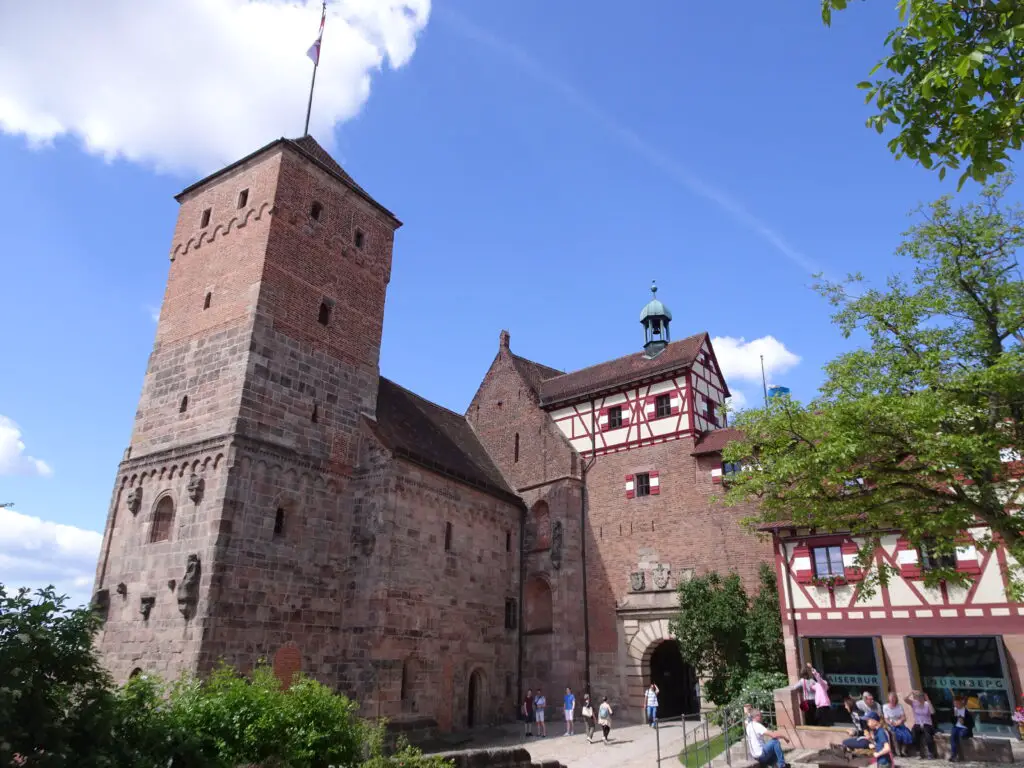
I highly recommend visiting the interior to check out some of the well-preserved state rooms and living quarters. Especially impressive are the Romanesque double chapel and the amazing views over the castle hill and old town from the Sinwell Tower. Check the current opening times here.
Albrecht Dürer House Museum
Albrecht Dürer, one of Germany’s most famous painters, spent the majority of his life in Nuremberg, where he lived in this pretty half-timbered house from 1509 until his death in 1529. Today, the building contains a museum, which focuses less on his artworks and more on the private life of Dürer and his family.

I’m a fan of Dürer’s works, but even if you’re not, the house gives an interesting glimpse into the living situation of the well-to-do in the late medieval times. The house is located in the pretty Tiergärtnertorplatz Square to the south-west of the castle. You can check the current opening times here.
Lunch Break
If you’ve made it this far without a break, I suggest you drop by one of the cafés and restaurants surrounding the castle for a late lunch. If a snack is all you need, you could try the famous local sausage – called Nürnberger Bratwürste, which are sold from little carts all over the city centre.

Henkersteg
Named after the former living quarters of Nuremberg’s medieval executioner, the ‘Hangman’s Pier’ is far less grim than its name suggests. As a matter of fact, I find the covered wooden bridge crossing the Pegnitz River to be one of the city’s most scenic spots.
The bridge connects the St. Lorenz quarter in the southern town centre to a small island in the Pegnitz and is surrounded by pretty medieval buildings, including the attractive half-timbered Weinstadel House and the Wasserturm Tower, part of the city’s erstwhile fortifications.

To get here, just walk south from the Albrecht Dürer House until you reach the river, cross over to the Trödelmarkt Island and walk to its western tip.
Hesperidengärten
I assume not a lot of travelers make it to these beautiful baroque gardens, as they’re a little out of the way. In fact, I only stumbled across them during my most recent visit to the city, but I highly recommend checking them out.
In the summer, these gardens are full of pretty little fountains, potted plants and blooming flowers, plus there are some nice decorative details, including a historic sundial and lots of 17th century statues depicting mythological and allegorical figures.
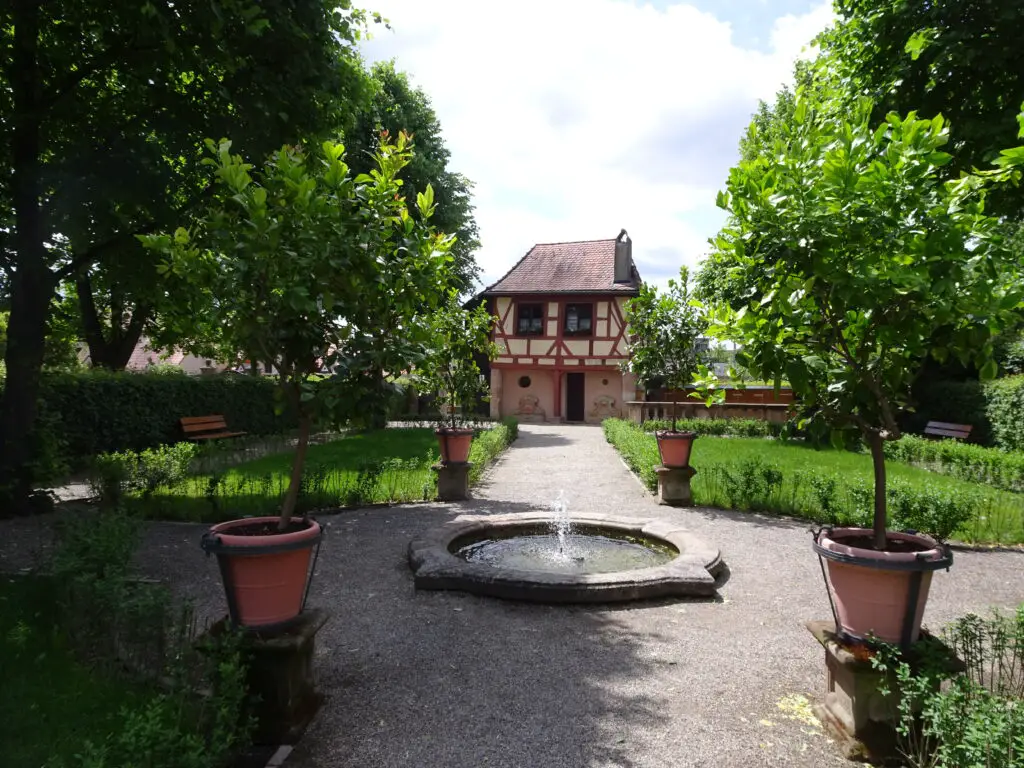
There’s also a small café selling drinks and snacks and if you’ve still got some energy left, you can go check out the Johannisfriedhof, directly to the west of the gardens. The peaceful cemetery is home to the tomb of Albrecht Dürer and many of his contemporaries.
To get to the gardens, just follow the northern shore of the Pegnitz River west from the Henkersteg for 10 minutes, then turn north after exiting the small Hallerwiese Park, which lies immediately to the west of the historic centre.
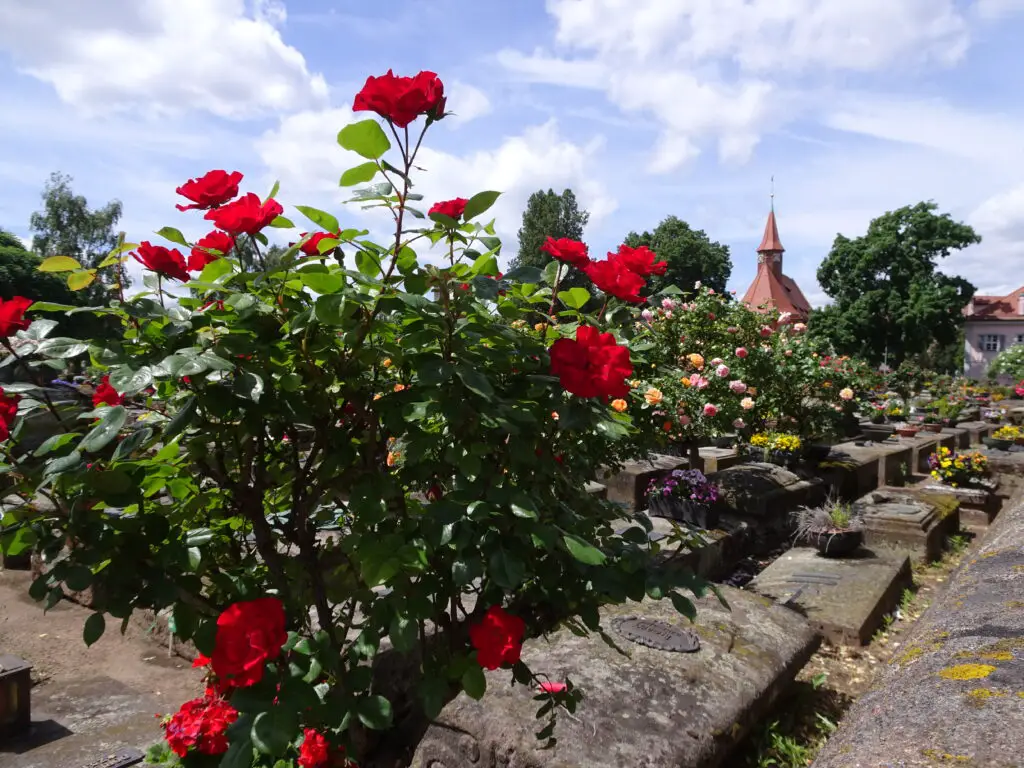
Taking a stroll in these beautifully landscaped gardens is a great way to end your day exploring Nuremberg. Afterwards, you can retrace your steps to the historic centre to grab some dinner or to return to the train station, where you started your explorations.
Nuremberg Itinerary Map
This map includes all the places mentioned in my itinerary – check it out to get an idea of the city’s layout.
The Best Hotels in Nuremberg
There’s no shortage of places to stay in Nuremberg. If you’re on a budget, the city has one of Germany’s coolest youth hostels, which is located in the former granary of the medieval castle and has both dormitories and privates available.
There are also plenty of well-rated mid-range options, like Hotel Victoria or Melter Hotel, as well as some truly luxurious places, like Hotel Karl August. You can have a look at more places to stay at in the map above.
See Also
The Ultimate One-Day Itinerary for Leipzig, Germany’s Cultural Boomtown
What to Know About Visiting the Kyffhäuser Monument in Central Germany
What to Know About Visiting Berlin’s Abandoned Teufelsberg Radar Station
